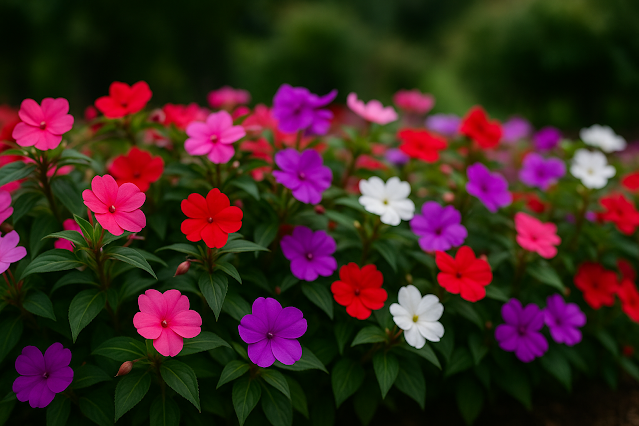A Fresh Approach to Growing Impatiens: Shade Garden Jewels
Impatiens are known not just for their kaleidoscope of colors, but for their rare ability to flourish where many flowers falter—under the canopy of shade. With their vibrant blossoms and tender greenery, these delicate plants have the power to transform shadowy spaces into vivid, living tapestries. Planting them, however, requires more than scattering seeds; it calls for attention to environment, rhythm, and subtle cues.
Selecting a Site that Speaks to Their Nature
Impatiens detest harsh light. To see them truly thrive, look for areas that bask in filtered sunlight or remain shaded for most of the day. Their leaves crisp easily under midday glare, so spaces protected by tall shrubs, fences, or building overhangs offer the most comfort. Their ideal world is one of indirect light and gentle warmth.
Preparing a Bed They Can Call Home
Beneath the surface, Impatiens need rich, spongy earth that allows air and moisture to flow freely. Begin by loosening the soil to a depth of 8–10 inches, and work in compost or rotted leaves until the bed feels soft and fertile. Extreme soil conditions don’t suit them—steer clear of overly coarse sand or waterlogged, heavy clay. If water tends to pool in the chosen area, elevate the bed slightly to improve drainage.
Transplanting with Intention
Whether you're relocating young seedlings or tucking nursery plants into your garden, the key is gentleness. Lift each plant with care, preserving as much of the root ball as possible. Position them slightly above soil level rather than burying the stems, and space them generously—at least 12 to 15 inches apart—to ensure they breathe freely and don’t invite mildew.
Hydration: A Balancing Act
Impatiens drink frequently, but never in gulps. Their roots prefer a steady supply of moisture that doesn’t flood or dry out. Water deeply when the top inch of soil begins to feel dry, preferably in the early morning. Containers, especially those hanging in wind-exposed areas, may need daily attention during hot spells. Direct the water toward the soil around the roots, not the leaves, to minimize moisture-related illnesses.
Feeding to Encourage Long-Term Beauty
To keep the blooms coming, a gentle feeding routine is essential. Liquid fertilizers diluted to a quarter strength work well every few weeks, offering just enough nutrients without overwhelming the plant. Too much nitrogen can lead to a surge in leaves and a stall in flowers, so lean toward balanced or blossom-focused formulas.
A Mulch Blanket for Protection
Covering the soil with a light layer of mulch not only helps conserve moisture, but also creates a buffer against weeds and temperature swings. Choose materials like pine needles, fine bark, or shredded leaves, and lay them loosely around the plants, steering clear of direct stem contact.
Keeping Watch for Trouble
In damp and muggy environments, Impatiens are prone to developing fungal troubles. To keep problems away, avoid crowding, minimize overhead watering, and remove any yellowing or spotted leaves right away. If mildew or stem rot appears, trim back heavily affected areas and consider rotating with other shade plants the following season to refresh the soil.
Wintering Them Indoors
In frost-prone regions, Impatiens won’t survive outdoors once temperatures dip. However, they can live on indoors if potted before the first freeze. Alternatively, snip healthy cuttings, root them in water, and nurture them inside until spring returns. This not only preserves your favorite varieties, but allows for an earlier jump next season.
Final Thoughts
Impatiens might seem delicate, but with thoughtful care, they reward even modest effort with a riot of bloom. In a world where sunlight dominates, these flowers bring joy to the shadows. By tuning into their quiet needs and planting them with purpose, you can unlock a garden that glows softly—even when the sun hides away.

Comments
Post a Comment